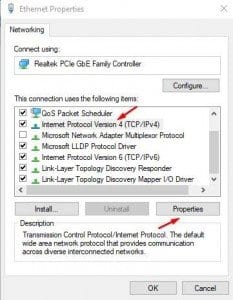

Since DoH was not originally designed as a transport layer protocol, it does not offer robust privacy protections. This allows DoQ to compare favorably with DNS-over-HTTPS (DoH). In addition to better speed and a lesser packet loss rate, QUIC also offers more encryption options. With DNS-over-QUIC implemented, the connection is established much faster than with DNS-over-TLS(DoT). Its goal is to provide maximum privacy (opens in new tab) with the minimum latency. In short, DNS-over-QUIC is a DNS protocol that uses the QUIC transport layer protocol to transmit DNS requests.

We must note that nobody has implemented “Connection Migration” yet, but judging by how it is described in the standard, we expect someone to take on the challenge of becoming a trailblazer, sooner or later. When QUIC is in use, your phone will survive switching from one IP address to another, an event that's called "Connection Migration", without inconveniencing you as a user. Older protocols could barely jump through all these hoops and hurdles, but QUIC can. We are constantly on the move and on the internet: in the morning we connect to the home router to scan the latest news, once we leave the house to go to work our phone switches from Wi-Fi to 4G and has to reconnect to the website and DNS servers (opens in new tab), and when we finally reach office, our smartphone (opens in new tab) has to connect to the office Wi-Fi. QUIC also solves the problem inherent to the extremely fast pace of life. With QUIC the number of round-trips is reduced to one. A typical handshake you get consists of two round-trips: first, a TCP connection is established and then the TLS layer encrypts the connection. These features are typically performed by a higher-level protocol, such as TLS. It lives up to its name by doing things quicker than its established analogues.įirst and foremost, it is due to the fact that QUIC provides security features, like encryption (opens in new tab) and authentication, from the transport protocol itself. QUIC is a transport layer network protocol built on top of UDP, which transmits packets of data between servers or between a server and a client. This can slow the traffic speed down significantly, and as the demand for uninterrupted Internet connectivity across different networks grew, so did the need for a new, faster and more reliable solution. That means that if one of the response packets gets lost because of the weak connection, the rest of them will have to wait in line until the lost packet is re-sent, hoping that it gets through this time.


 0 kommentar(er)
0 kommentar(er)
